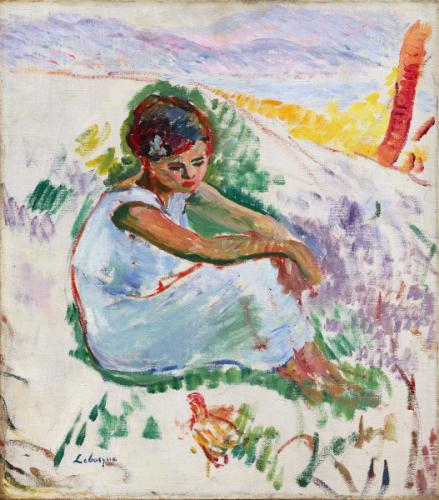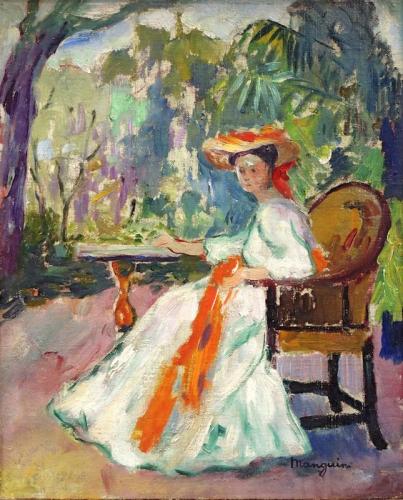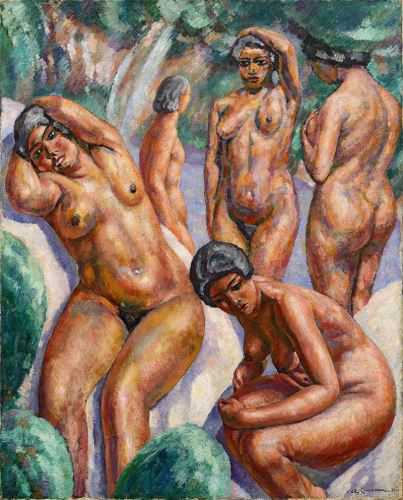Augustin Carrera – A French Painter Between Academic Tradition and Eastern Light
A Precocious Vocation and Rigorous Training
Born on April 3, 1878 in Madrid to French parents, Augustin Carrera showed an early gift for drawing. He quickly entered art schools, first at the École des Beaux-Arts in Marseille under Alphonse Moutte, then at the École des Beaux-Arts in Paris in the renowned studio of Léon Bonnat. As a grant holder from the City of Marseille, Carrera ranked among the most talented students of his generation and was soon recognized for his promising skills.
Determined Beginnings
After marrying, Carrera faced financial hardship. He was compelled to earn a living from his art, which only strengthened his resolve. He drew with renewed intensity, inspired by works he studied in museums and galleries—Cézanne, Gauguin, Seurat, but most profoundly, Degas, Toulouse-Lautrec, Monet, Van Gogh, and Pissarro. Gradually, landscape became central in his painting, allowing him to explore a vibrant color palette and a new pictorial approach.
The Asian Turning Point: The Indochina Grant
In 1912, Carrera was awarded the prestigious Indochina Grant, marking a pivotal moment in his career. He spent eight months in Asia, returning with powerful works inspired by temples, riverbanks along the Red River, and local scenes of daily life. The King of Cambodia commissioned him to paint monumental panels for his palace, which Carrera would install during a second journey in 1928.
War, Spanish Influences, and Parisian Affirmation
Mobilized during World War I and wounded in action, Carrera recuperated in Allauch from 1916. A subsequent trip to Spain proved transformative: discovering the masterpieces of El Greco and Velázquez pushed him to settle in Montparnasse, Paris’s new artistic hub. Unlike many bohemian artists of the time, Carrera was reserved, often dressed in grey. His ties with politician and collector Albert Sarraut became instrumental in advancing his career.
Critical Acclaim and Institutional Recognition
From 1910 onwards, Carrera exhibited in prestigious salons: Salon des Tuileries, Salon des Indépendants, Salon des Artistes Français, Musée des Arts Décoratifs, the Triennale at Quai Malaquais, and the 1937 International Exposition, where he won a gold medal. He received critical support from art writer François Thiébault-Sisson (Le Temps) and was represented by galleries such as Druet and Georges Petit, which showcased his refined and sensual studies of the female nude.
A Multi-Faceted Artist: Landscapes, Nudes, and Decorative Works
Carrera’s oeuvre is rich and varied, from luminous exotic landscapes to monumental decorative commissions. In 1924, he designed the stage sets for the Marseille Opera, collaborating with fellow Provençal painters Hurard, Eichacker, De Groux, Audibert, and Verdilhan.
Though celebrated for his landscapes, Carrera’s most distinctive artistic statement lies in his female nudes. Combining anatomical precision, sensuality, and chromatic sophistication, he used light to sculpt the body, creating works where greys and thick impastos evoke almost sculptural forms. As Antoine Bourdelle once said:
“Carrera has found a way to combine daring color with the exquisite subtlety of atmosphere. People of Marseille, you have a great painter! Take care of him!”
Distinctions and Legacy
Augustin Carrera was made Chevalier of the Légion d'honneur in 1920 and promoted to Officier in 1928. He leaves behind a prolific, sensitive body of work—deeply human, radiant with color, and open to the world.

Happy Birthday Galerie Pentcheff
11 January 2019 - 9 March 2019

Fauvisme et modernité en Provence
15 February 2014 - 15 March 2014


